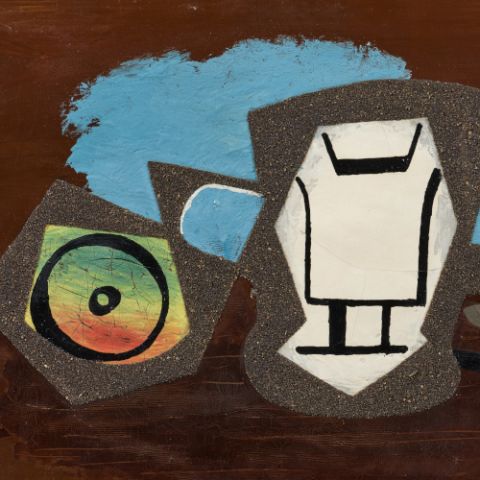
Lot 37 | Hans Uhlmann | Turm der Vergänglichkeit
Berlin 1900 - 1975
Title: Turm der Vergänglichkeit.
Date: 1967.
Technique: Chrome-nickel steel, polychromed.
Measurement: 115 x 26 x 26cm.
Notation: Monogrammed and dated (incised) on the plinth: U. 67.
Provenance:
- Galerie Brusberg, Berlin (acc. to the consignor)
- Corporate collection Germany
Literature:
- Haftmann, Werner/Lehmann-Brockhaus, Ursula: Hans Uhlmann - Leben und Werk, Berlin 1975, cat. rais. no. 229, ill.
- Uhlmann is considered the founder of metal sculpture in Germany
- Characteristic late work that masterfully unites antagonisms
- Created in the same decade as his famous sculpture in front of the Deutsche Oper in Berlin
Worldwide recognition
Hans Uhlman is one of the most important sculptors and draftsmen of the post-war period. His works are in collections worldwide and have been presented internationally in numerous exhibitions, e.g. at the Venice and Sao Paulo Biennales, the documenta in Kassel, the Museum of Modern Art in New York and many others. Large-scale, expansive sculptures by the artist can be admired in public spaces in Berlin, western Germany and Rome.
A special career
The artist did not begin his studies with an artistic education, but at the Technical University of Berlin, and initially worked as an engineer after graduating. Uhlmann's enthusiasm for music had accompanied him since childhood, and his interest in the visual arts developed alongside his career. He created his first works, which he exhibited at the Galerie Fritz Gurlitt in Berlin in 1930. His early head objects made of clay and plaster were replaced by wire sculptures, but it was only after the war that he was able to continue his work, which was later highly acclaimed and defamed as “degenerate” during the Nazi era. As early as 1945, he presented works at the Galerie Gerd Rosen in Berlin. There he also worked as a curator and came into contact with renowned artists such as Hannah Höch, Jeanne Mammen and Theodor Werner. From 1950, he worked at the Berlin University of the Arts, where he later founded the first class for metal sculpture in Germany. He himself only used metal for his sculptures.
“Tower of Transience"
In the 1950s, wire compositions characterized Uhlmann's oeuvre and were then expanded to include spiral elements. His late work is characterized by tower- and column-like structures, such as the “Tower of Transience” from 1967 presented here.
The black steel stele standing on a triangular plinth asserts its strong presence in the room and appears to extend vertically into infinity. The sculptor skillfully combines gravity with lightness here, because the seemingly heavy form seems to reveal its center, which is determined by filigree. The angular forms are contrasted in the middle with the circular form: two round, red-painted steel plates interrupt the vertical and form the “stage” for a funnel-like tapering and widening mesh of lines. This creates dynamism in the static. The metal rods continue in imaginary lines in space and at the same time they seem to turn, almost to dance. The artist's love of music can be sensed here in the moving rhythm of the delicate construction. The closed form opens up and the drama of the work seems to come to a head at the core in the center of the object. The center meets the infinite, the heavy the light, the static the moving - and the living the dying. This is already suggested by the title and is underpinned by the mesh of rods: they are reminiscent of an hourglass and thus refer to the memento mori.
Print this lot | Recommend lot |
Conditions of this Lot
32% buyer’s premium on the hammer price
Hans Uhlmann Germany Constructivism Post-War Art Sculptures 1960s Shapes Object Metal



